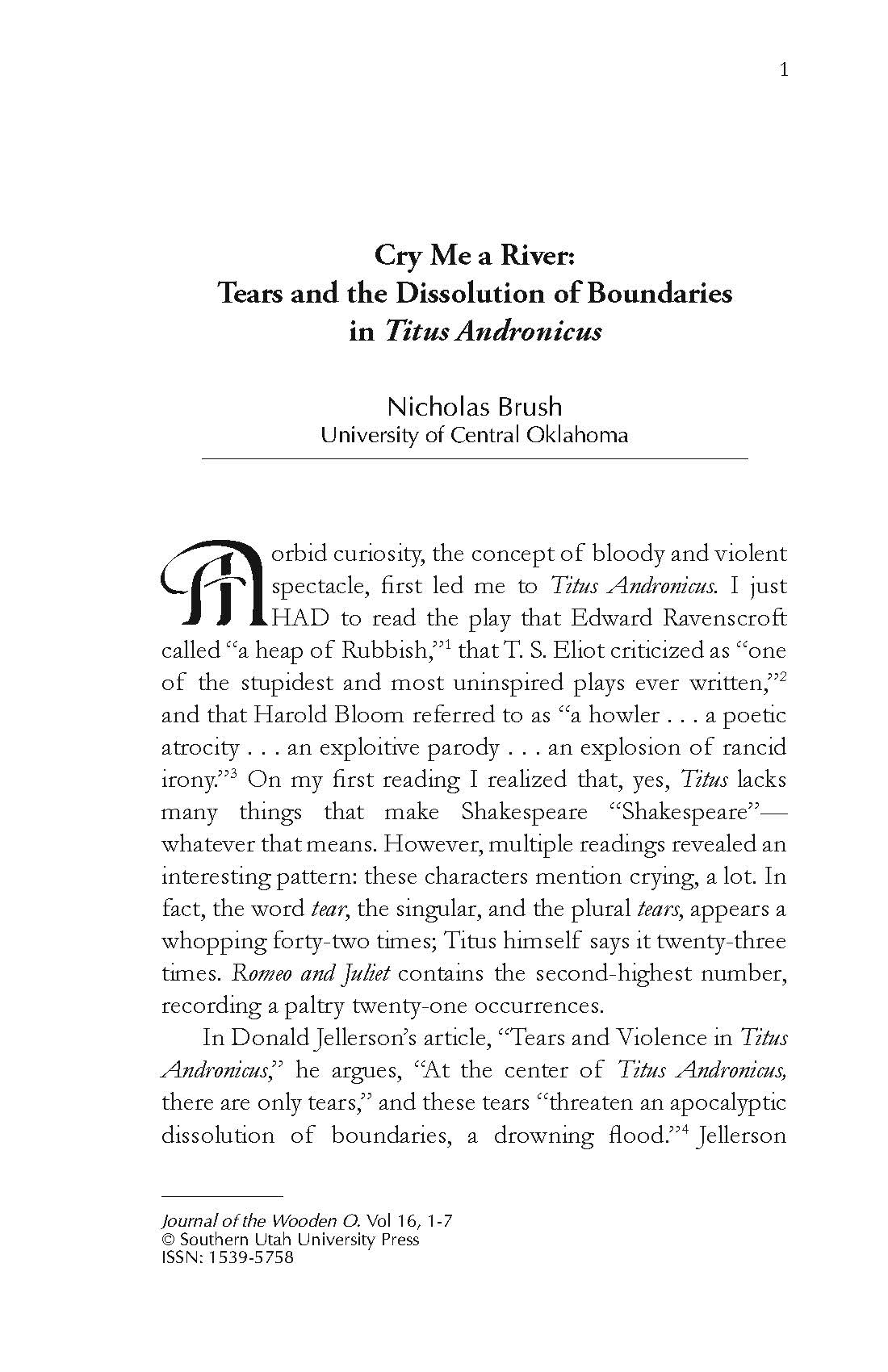Cry Me a River: Tears and the Dissolution of Boundaries in Titus Andronicus
Main Article Content
Abstract
Morbid curiosity, the concept of bloody and violent spectacle, first led me to Titus Andronicus. I just HAD to read the play that Edward Ravenscroft called “a heap of Rubbish,”1 that T. S. Eliot criticized as “one of the stupidest and most uninspired plays ever written,”2 and that Harold Bloom referred to as “a howler . . . a poetic atrocity . . . an exploitive parody . . . an explosion of rancid irony.”3 On my first reading I realized that, yes, Titus lacks many things that make Shakespeare “Shakespeare”—whatever that means. However, multiple readings revealed an interesting pattern: these characters mention crying, a lot. In fact, the word tear, the singular, and the plural tears, appears a whopping forty-two times; Titus himself says it twenty-three times. Romeo and Juliet contains the second-highest number, recording a paltry twenty-one occurrences.
